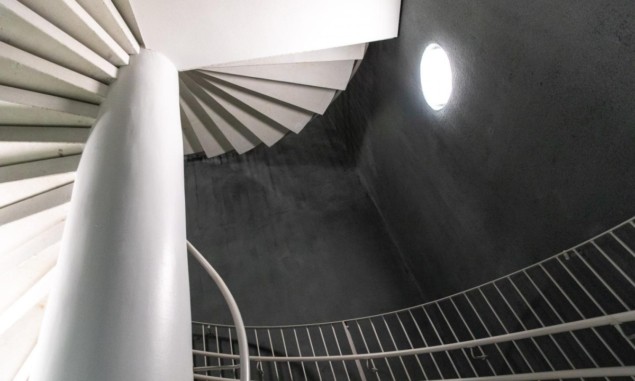
Pulped wood has been used by researchers in Finland to create sustainable acoustic materials for improving sound quality in buildings. The fibre-based foams have already been used in an award-winning art installation and to improve the acoustics in an office.
The acoustics of a space affects our ability to communicate and concentrate, but there is no one-size-fits-all solution to create better acoustics. “For a lecture hall you want high clarity so that people towards the back can hear the speaker, but you wouldn’t want such high clarity in an open-plan office or you would be distracted by everyone’s conversations,” says Jose Cucharero, an acoustics researcher at Aalto University, who led the research.
In acoustics engineering, speech clarity is the ratio between the energy of early sound reflections (which enhance intelligibility) and late reflections (which reduce intelligibility). Another key metric is reverberation time, defined as the time taken for a sound to drop by 60 dB after a sound source is turned off.
Buildings with lots of hard surfaces such as exposed brickwork are notorious for low clarity and long reverberation times. To soften their acoustic character, these spaces are often fitted with acoustic panels that absorb or diffuse sound. These are the perforated panels in walls and ceilings of modern meeting rooms and are usually made from gypsum, mineral wool or fibreglass.
Sinking carbon
These materials are effective, long-lasting and affordable, and gypsum in particular is used throughout the construction industry for plasters and decorative features. But gypsum requires a lot of water in its preparation and mining the raw materials is energy-intensive. Indeed, gypsum plasterboard produced in Europe has an average carbon dioxide equivalent of 1967 g/kg.
Wood products, on the other hand, tend to have a lower carbon footprint. More significantly though, they act as a carbon sink throughout their lifetimes and can be recycled into paper afterwards. Finnish timber has a carbon dioxide equivalent of just 44–68 g/kg, while storing roughly 1835 g carbon dioxide per kilogram.
Cucharero and his team work with Lumir Oy, a company that creates sound-absorbing foams by mixing water with pulped wood from sustainable forests in Finland. “If you roughly tear a piece of paper, you can see the hairs on the edges – those are the fibres we are using,” says Tuomas Hänninen, the company’s R&D director.
Cucharero’s group describe three recent installations of their fibre-based acoustic foams in the journal Frontiers in Build Environment. The most recent was at the office of the company Co-Founders in Helsinki, where users had complained of poor speech intelligibility and bad sound insulation between rooms. “It was almost impossible to make any phone calls in the office because of the echo. But as we really appreciate the aesthetics of the place, we wanted to find a solution that wouldn’t ruin the looks,” says Ia Adlercreutz, chief executive of Co-founders. “The reduction of reverberation is unbelievable.”
Against the grain
Another installation was an art space at Aalto University called Mare Tranquillitatis, comprising a spiral staircase with embedded minerals. The exhibit was given an unexpected serenity by treating the walls, ceiling and stair landings with textured wood foam that blended in with the original painted concrete.
The final installation was a room at the Supreme Court of Finland, a building dating back to 1816. Excessive reverberation meant that users struggled to hold meetings even when using an AV system. Due to the protected status of the building, only 19% of the total surface area was treated, which reduced reverberation time enough to achieve marginal improvements without changing the room’s physical appearance.
Kinky fibres
“Natural fibres have lots of holes and kinks, which makes them excellent acoustic attenuators,” says Hänninen. This irregularity is present over multiple scales, from the morphologies of fibres to the matrices that make up the foams. The researchers describe these material characteristics in a separate paper in Cellulose, and they are now studying the influence of fibre elasticity and pores within individual fibres.
Henrik Möller, a consultant at the international acoustics company Akukon, says that Lumir Oy has developed a strong reputation for taking a research-driven approach to acoustics and sustainability. “Their products are acoustically at least as good, if not better, than other comparable but less sustainable products,” he says.
Jorge Arenas is a researcher at the University Austral of Chile who studies the properties and life-cycle assessment of biomaterials, including coconut fibres, natural rubber and esparto grass. He says “These sound-absorbing materials exhibit many advantages compared with synthetic fibres, such as biodegradability, safety, light weight and low costs.”
Arenas cautions, however, that more analysis is needed on the effects of adding fire retardants, insect repellent, improving structural integrity, and other considerations for practical purposes.



